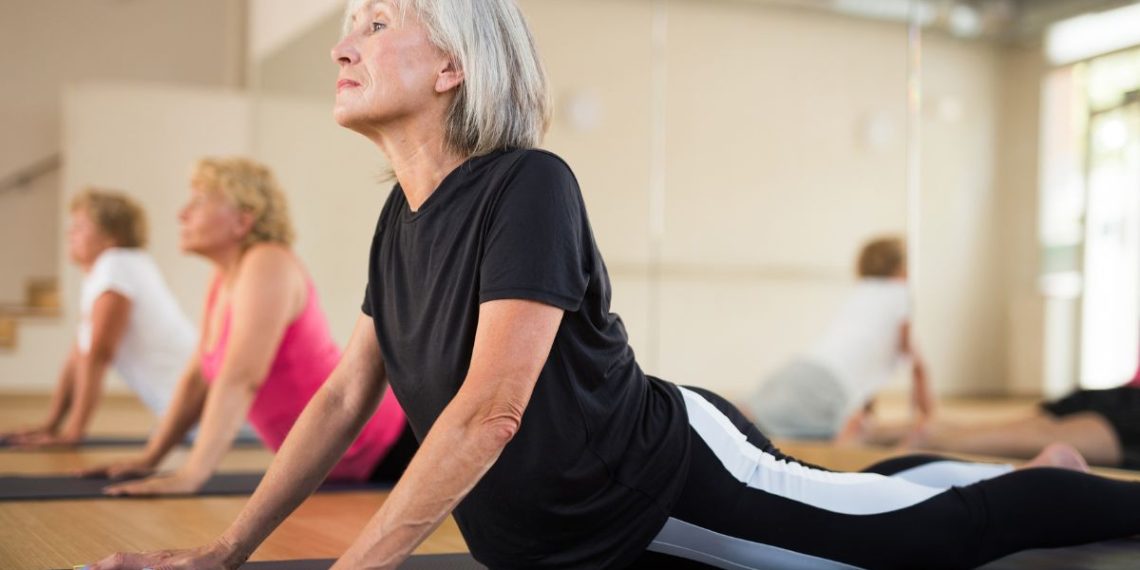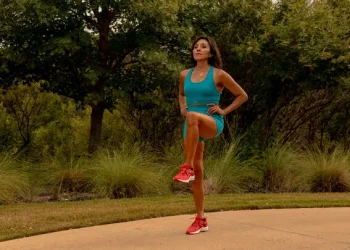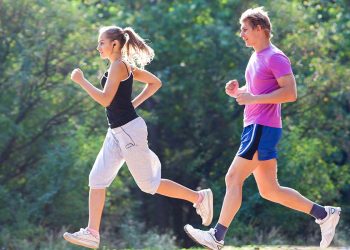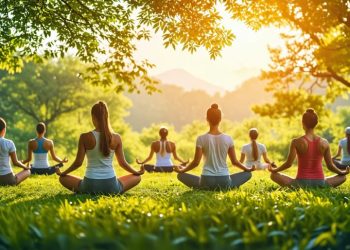In an age dominated by high-intensity interval training, competitive fitness tracking, and body-sculpting workouts, a quieter revolution is taking place in how we understand exercise. Holistic exercise approaches practices that integrate physical movement with mental focus and spiritual awareness are gaining recognition not merely as alternatives to conventional fitness, but as pathways to comprehensive wellbeing. These ancient practices, now validated by modern science, remind us that true health extends far beyond muscular strength or cardiovascular endurance.
The Philosophy of Wholeness
At the heart of holistic exercise lies a fundamental principle: the human being is not a collection of separate parts but an integrated whole. When we move our bodies, we inevitably engage our minds. When we quiet our minds, we affect our physical state. When we cultivate our spirit that sense of connection, meaning, and inner peace both body and mind benefit.
This understanding stands in stark contrast to the Western tendency to compartmentalize health. We go to the gym for our bodies, therapy for our minds, and perhaps religious or spiritual gatherings for our souls, as if each operates independently. Holistic exercise philosophies, many rooted in Eastern traditions, reject this fragmentation. They propose that the most profound healing and growth occur when we address all dimensions of ourselves simultaneously.
The concept isn’t merely philosophical abstraction. Research in psychoneuroimmunology the study of how psychological processes affect the nervous and immune systems has demonstrated that our thoughts and emotions directly influence physical health. Chronic stress, for instance, doesn’t just feel bad; it manifests in inflammation, weakened immunity, and cellular aging. Conversely, practices that calm the mind demonstrably reduce stress hormones, lower blood pressure, and improve immune function. The mind-body connection isn’t metaphorical it’s biological.
Tai Chi: The Embodiment of Flow
Perhaps no practice better exemplifies holistic exercise than tai chi, often described as “meditation in motion.” Originating in ancient China as a martial art, tai chi has evolved into a graceful system of slow, flowing movements coordinated with deep breathing and focused attention. To watch someone practice tai chi is to witness a philosophy in action.
Each movement in tai chi follows principles drawn from Taoist philosophy and Traditional Chinese Medicine. Practitioners speak of cultivating “qi” (pronounced “chee”) the vital life energy believed to flow through the body along specific pathways called meridians. While Western science doesn’t embrace qi in literal terms, researchers have found compelling evidence that tai chi produces measurable physiological benefits.
Studies have shown that regular tai chi practice improves balance and reduces fall risk in older adults crucial for maintaining independence and preventing injury. But the benefits extend far beyond stability. Research published in medical journals has documented improvements in cardiovascular health, reduced inflammation, better immune response, and enhanced cognitive function among tai chi practitioners. Some studies suggest it may even slow cellular aging by protecting telomeres, the protective caps on our chromosomes.
What makes tai chi truly holistic, however, is its simultaneous engagement of body, mind, and spirit. Physically, it strengthens muscles, increases flexibility, and improves posture without the joint stress of high-impact exercise. Mentally, it demands present-moment awareness each movement requires attention to form, breath, and balance, naturally quieting mental chatter. Spiritually, many practitioners report a sense of harmony, connection, and inner peace that emerges from the practice.
The slow, deliberate nature of tai chi challenges our modern addiction to speed and intensity. It asks us to find power in softness, strength in yielding, and progress in patience. These aren’t just movement principles they’re life principles.
Walking as Sacred Practice
Walking, humanity’s most fundamental form of movement, holds unexpected potential as a holistic practice. While we often view walking merely as transportation or basic exercise, contemplative traditions have long recognized it as a portal to deeper awareness.
Mindful walking, practiced in Buddhist traditions for millennia, transforms an ordinary activity into meditation. Instead of walking to get somewhere, you walk to be somewhere fully present with each step. You feel your foot lifting, moving forward, placing down. You notice the shifting of weight, the engagement of muscles, the rhythm of breath coordinating with movement. The mind, given this simple yet complete task, settles into the present moment.
Walking meditation can be practiced anywhere in nature, around your neighborhood, even in a hallway. The pace is typically slower than normal walking, though not as slow as tai chi. What matters is the quality of attention. When the mind wanders (as it inevitably will), you gently return awareness to the physical sensations of walking.
The Japanese practice of “shinrin-yoku,” or forest bathing, combines mindful walking with immersion in nature. Research on forest bathing has revealed remarkable benefits: reduced cortisol levels, lower blood pressure and heart rate, improved mood, and enhanced immune function. Simply being among trees, moving slowly and attentively, seems to recalibrate our nervous systems.
Walking meditation also offers something particularly valuable in our distracted age: it retrains us to be present without external stimulation. No music, no podcasts, no smartphone just you, your body, and the world around you. This simplicity is both challenging and liberating.
The Yoga Renaissance
Yoga, another ancient practice experiencing modern revival, encompasses far more than the physical postures (asanas) popularized in Western studios. Classical yoga is an eight-limbed path addressing ethical conduct, self-discipline, physical postures, breath control, sensory withdrawal, concentration, meditation, and ultimately, a state of unified consciousness.
While contemporary yoga classes often emphasize physical flexibility and strength valuable benefits indeed holistic yoga practice integrates these elements into a larger framework. Pranayama, or breath control, harnesses the intimate connection between breath and mental state. Slow, deep breathing activates the parasympathetic nervous system, inducing relaxation. Different breathing patterns can energize, calm, or balance the practitioner.
The postures themselves aren’t merely physical challenges but opportunities to notice the interplay of body and mind. How do you respond when a pose is difficult? Do you push aggressively? Give up? Can you find the edge between effort and ease? These aren’t just questions about flexibility they’re inquiries into how you approach life’s challenges.
Yin yoga, a slower, more meditative form, involves holding poses for several minutes, working with connective tissue while cultivating patience and acceptance. Kundalini yoga emphasizes breathwork, chanting, and energy movement. Each style offers a different gateway to the holistic integration of body, mind, and spirit.
Qigong: Cultivating Life Energy
Closely related to tai chi, qigong (pronounced “chee-gong”) represents thousands of years of Chinese wellness practice. While tai chi follows a specific sequence of martial arts-derived movements, qigong encompasses a broader range of practices some moving, some still all aimed at cultivating and balancing qi.
Qigong exercises might include gentle, repetitive movements coordinated with breath, stationary postures held while visualizing energy flow, or self-massage techniques. Some forms emphasize health and longevity, others spiritual development or martial power.
Medical qigong has been studied for its effects on various health conditions. Research suggests benefits for hypertension, chronic pain, anxiety, depression, and even cancer-related fatigue. Like tai chi, qigong appears to work through multiple mechanisms: reducing stress, improving circulation, enhancing immune function, and promoting overall systemic balance.
The practice is accessible to virtually anyone, regardless of age or fitness level. Many exercises can be performed sitting or even lying down, making qigong particularly valuable for those with mobility limitations or chronic illness.
The Science of Slowing Down
Modern neuroscience and physiology help explain why these gentle, mindful practices produce such profound effects. Our nervous system has two primary modes: sympathetic (fight-or-flight) and parasympathetic (rest-and-digest). Contemporary life, with its constant demands and stimulation, keeps many of us in chronic sympathetic activation a state meant for brief emergencies, not sustained operation.
Holistic exercise practices activate the parasympathetic nervous system, allowing the body to shift into restoration and healing mode. Heart rate variability the variation in time between heartbeats improves, indicating greater nervous system flexibility and resilience. Inflammation markers decrease. The hippocampus, crucial for memory and emotional regulation, may even grow larger with regular meditative movement practice.
Fascinatingly, these practices also affect gene expression. Studies on meditation and mindful movement show changes in genes related to inflammation, immunity, and cellular aging. We’re not just changing how we feel in the moment we’re influencing our biology at a fundamental level.
Integrating Holistic Movement into Modern Life
The beauty of holistic exercise approaches is their adaptability. You don’t need to become a tai chi master or spend hours in meditation. Even brief daily practices offer benefits.
Start where you are. If you’ve never tried these approaches, begin with five minutes of mindful walking or simple stretching with awareness. Notice your breath. Feel your body. The key is quality of attention, not duration or intensity.
Consider your existing activities. Can you bring mindful awareness to your morning walk? Can you take three deep, conscious breaths before starting your workout? Can you end your exercise session with a minute of stillness, noticing the sensations in your body?
For those drawn to structured practice, many communities offer tai chi, qigong, or yoga classes. Online resources and apps provide guided sessions for home practice. The important thing is consistency. Ten minutes daily outweighs an occasional hour-long session.
Remember that holistic exercise isn’t about perfection. It’s about process, about meeting yourself where you are with curiosity and kindness. Some days your mind will be clear; other days it will chatter endlessly. Some days your body will feel fluid; other days stiff or tired. All of this is the practice learning to be present with whatever arises.
Conclusion: Moving Toward Wholeness
As our understanding of health evolves, we’re rediscovering ancient wisdom: we are not machines requiring mechanical maintenance, but living systems seeking balance and integration. Holistic exercise approaches offer more than physical fitness they provide paths to embodied wisdom, equanimity, and vitality that extends beyond muscle tone or endurance.
In slowing down, we speed up our healing. In paying attention, we discover presence. In moving with awareness, we touch something larger than ourselves call it spirit, call it connection, call it simply the deep satisfaction of being fully alive in this moment, in this body.
The invitation is simple: move, breathe, notice. Your body knows the way home; these practices simply help you listen. In a world that constantly pulls us out of ourselves, holistic exercise is an act of gentle rebellion a return to wholeness, one conscious breath, one mindful step at a time.





